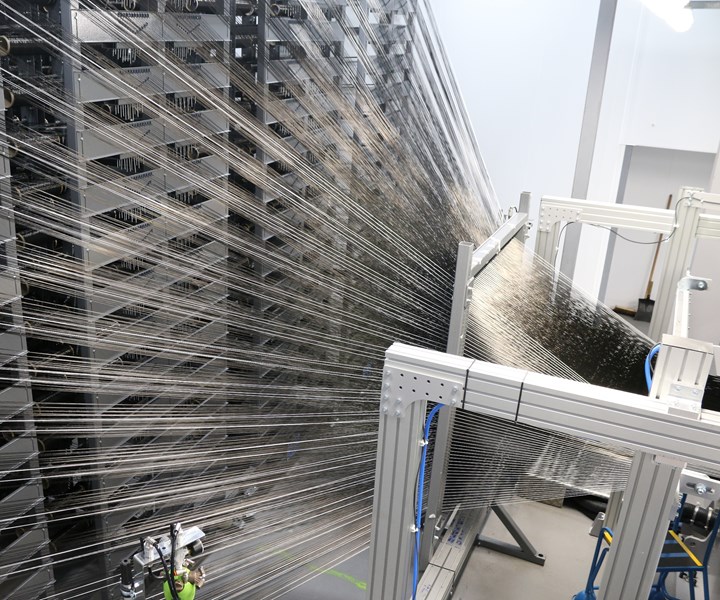Cygnet Texkimp supplies high-capacity 3D weaving creel to the AMRC
The University of Sheffield’s Advanced Manufacturing Research Centre (AMRC) will use the creel to help produce woven structures for automotive and aerospace applications.

Source | Cygnet Texkimp
Custom machinery manufacturer and fiber processing specialist Cygnet Texkimp (Cheshire, U.K.) reported on Jan. 14 that it has supplied a 3,000-position 3D weaving creel to the Composites Centre at the University of Sheffield’s Advanced Manufacturing Research Centre (AMRC, Sheffield, U.K.).
The high-capacity creel will be used alongside AMRC’s 3D jacquard loom to produce woven structures from carbon fiber, ceramic and other technical fibers for automotive and aerospace applications. With a footprint of fewer than 40 square meters, the 3D creel is said to be one of the highest volume-per-square-meter weaving creels in the world. It features an intelligent control system to maintain low and consistent running tension of the fiber into the downstream weaving process and to enable operators to adjust the tension of individual positions or zones according to fiber weight and position in the woven structure. A bespoke guide system accommodates varied fiber counts (k-counts) and tow widths, and a tension recuperation mechanism offsets the shedding motion of the loom.
“AMRC is taking dry fiber processing for composites to a new level in the U.K. Significant investment in advanced technologies will help the manufacturing sector develop composite solutions for wide ranging applications in automotive, aerospace, space and beyond,” says Chris McHugh, dry fiber development manager at the AMRC Composite Centre. “Controlling tension of fibers, varying speed of fibers and minimizing degradation to ensure highest performance is realized, are key factors that we need in our processes.”
“The way fibers are fed into the weaving process is absolutely vital to the quality of the finished product,” says Chris Furphy, product director at Cygnet Texkimp, “which means that fiber tension and fiber path — ensuring the fibers never come into contact with each other as this can easily cause damage — are really important when it comes to designing a creel like this.”
Cygnet Texkimp and the AMRC began working together in 2014. In 2018, AMRC commissioned Cygnet Texkimp to design a 2D weaving creel that is also housed at its facility.
Related Content
-
Plant tour: Albany Engineered Composites, Rochester, N.H., U.S.
Efficient, high-quality, well-controlled composites manufacturing at volume is the mantra for this 3D weaving specialist.
-
Highly tunable, woven lattice reinforcements target automotive structures
CAMX 2023: Startup Weav3D will be demonstrating its two collaborative automotive demonstrator parts and present two conference papers.
-
3D-woven composites find success in aerospace, space
CAMX 2024: Bally Ribbon Mills experts are displaying the company’s various joints, thermal protection system (TPS) technologies and other 3D woven composites for mission-critical applications.

.jpg;width=70;height=70;mode=crop)













